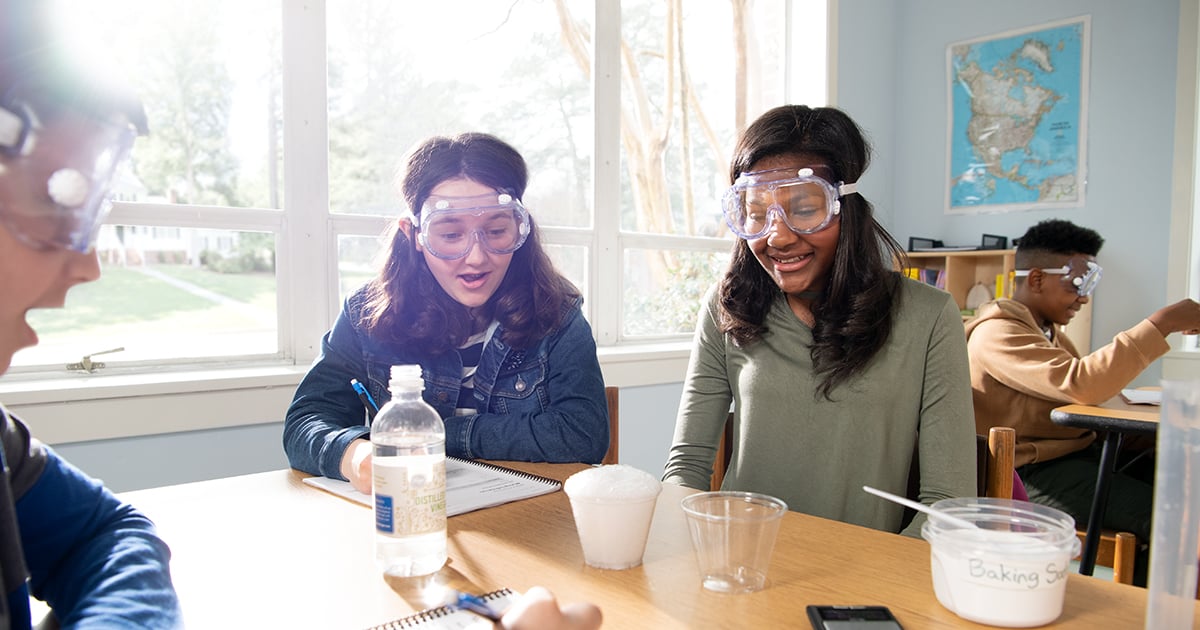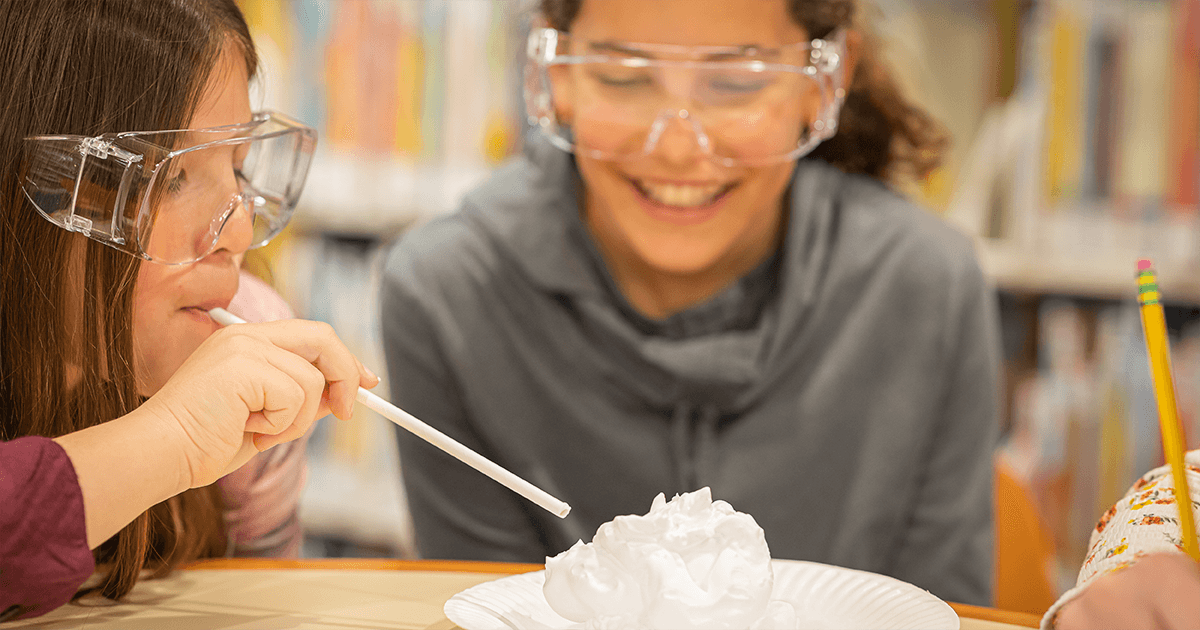Posted in: Aha! Blog > PhD Science > Data Stories High-Quality Curriculum > Nebraska District: PhD Science® Boosts Science Learning; Wit & Wisdom® is “Transformational”
“Wit & Wisdom has been transformational, a real game-changer for us,” says Becky Michael, language arts content area specialist in Scottsbluff (Nebraska) Public Schools. Based on the positive experience with the English language arts (ELA) curriculum, the school district in fall 2020 adopted Great Minds’ PhD Science for Grades 3–5 and is piloting it in Grades K–2.ELA scores on end-of-year state tests are mixed, but most impressive to Michael and her colleagues is the level of student engagement. She says some engagement data used to show 50 percent to 60 percent of students were on task, and now all classroom data show that almost 90 percent are on task.
SCOTTSBLUFF PUBLIC SCHOOLS PROFILE
3,400 students
Five elementary schools, one Grades 6–8 middle school, one high school, one preschool
Adopted Wit & Wisdom in Grades 3–8 for 2018–2019 school year and in K–Grade 2 in 2019–2020 school year
Adopted PhD Science in Grades 3–5 and piloted in grades K–Grade 2 for 2020–2021 school year
Students have become eager readers. “They want to go home and read and write more,” Michael says. Even the youngest students have learned the importance of supporting their assertions with evidence from the books. “We have Grade 1 students saying, ‘On page 6, the book says ...,’” she notes.
At the middle school level, Michael says students are showing more empathy and support for each other, a byproduct of the literature that asks them to consider multiple perspectives.
In addition, the English language arts curriculum is having a ripple effect in other classes. “One social studies teacher couldn’t believe how much improvement he saw on a test about World War I. “I’m sure that’s because Wit & Wisdom laid down important background knowledge in the second quarter that supported his teaching in the third,” Michael says. Grade 8 Wit & Wisdom students read All Quiet on the Western Front, historical accounts, and more in Module 2: The Great War.
 While teachers used to struggle to get some students to write, that has changed. “Now they have something to write about,” she says. She and her colleagues are confident of more consistent gains once standardized testing resumes.
While teachers used to struggle to get some students to write, that has changed. “Now they have something to write about,” she says. She and her colleagues are confident of more consistent gains once standardized testing resumes.
Teachers Are Enthusiastic, Too
The district adopted Wit & Wisdom for Grades 3–8 in the 2018–2019 school year, attracted by the curriculum’s rigor, emphasis on comprehension, and ability to build students’ “reading and writing stamina,” Michael says. Positive reviews from the independent EdReports helped narrow the choices, and teacher input in the selection process was key.
Teachers are happy with the results. “We’ve seen exponential growth,” says Grade 6 teacher Kenna Urmiller. Grade 4 teacher Megan Burda says, “Everything is more cohesive than in the past.” Adds Grade 5 teacher Aleighica Keeran: “My pedagogy in the classroom has increased. I’m having to think more critically how to engage my students.” [Note: Teacher quotations come from the Nebraska state video described in the sidebar.]
The school district has less experience (September through March of 2019–2020 school year) with Geodes®, the early literacy books offered by Great Minds, created in consultation with Wilson Language Training. One promising sign: Michael says “teachers are fighting” over the single set of books the district provided to each building per grade before the pandemic. She’s hoping the budget will allow them to buy additional sets for the second year.Nebraska’s Leadership
A four-minute video from the Nebraska Instructional Materials Collaborative profiles Scottsbluff’s work. The collaborative is a state effort to help schools and districts choose high-quality instructional materials to increase educational opportunities and equity. A helpful website summarizes reviews from EdReports, which gave Wit & Wisdom the highest ratings.
Supporting Teachers
Michael says it is important to give teachers time to plan, especially in the beginning. “They need time to work through the whole quarter, to understand the routines and scaffolds,” Michael says. The district offered two days of Great Minds training for all teachers. Middle school teachers had an extra day of training six weeks into the first module, focused on backward planning.
In the first year, teachers especially needed support with the shifts in writing instruction. Prior materials lacked the structure students needed. “We are now teaching many more types of writing in addition to narrative writing,” Michael says.
Professional development sessions focus on the alignment of Wit & Wisdom instructional routines and writing scaffolds from Kindergarten through Grade 8. During the monthly professional learning communities, some three-quarters of teachers’ questions involve writing, she says.
Bottom line: The district’s investment in literacy is paying off for teachers and students alike. “We knew we needed more rigor and a curriculum that built more content knowledge,” Michael says. “We used to teach reading and writing as separate classes. Now, with Wit & Wisdom, we’re proud to deliver integrated ELA instruction where the reading and writing are much more fused together, which stimulates multiple critical thinking skills at once.”
Strengthening Science Instruction, Too
“PhD Science offers kids to have hands-on opportunities … and it just really seemed to go along with what we’re doing in our school district,” Jeremy Behnke, principal of Lake Minatare Elementary and the district’s science content area specialist, told the Scottsbluff Star-Herald. “Kids are excited about it, and teachers are excited about it, so that means their knowledge and growth in science is going to continue to be strong.”
“We’re really changing the way we do science. Rather than the teacher standing up there and always giving the content, we’re kind of shifting that a little bit and we’re giving the hands-on experience followed by the content,” he said. “Then the kids are discovering why, instead of the teacher telling them why. And that’s where the learning really takes place.”
Submit the Form to Print

Jeremy Newth
Jeremy brings more than 14 years of classroom and administrative experience to his role partnering with districts and leaders across Kansas and Nebraska in implementing high-quality instructional materials. Born in Canada and growing up in the United States, Jeremy has lived and taught in Michigan, Australia, and Kenya, most recently leading an elementary school in Western Australia. Teaching across three continents, Jeremy has taught and led through multiple state and national curriculum reviews and adoptions. With an Australian-American family and a decade-plus living in Australia, he will assure you that Australian wildlife does not make living “down under” as dangerous as it’s made out to be: only once did a shark swim near a student’s kayak—and venomous snakes didn’t often slither near Jeremy’s school’s classrooms.
Topics: Data Stories High-Quality Curriculum








